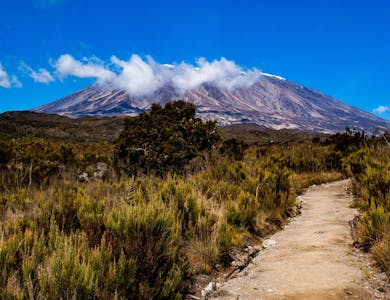Training For Kilimanjaro

Trekking to the summit of Kilimanjaro, the highest peak in Africa, is a once-in-a-lifetime experience that requires a high level of physical fitness. Climbing Kilimanjaro is an incredible adventure, but it is not an easy feat. To complete the trek successfully, trekkers need to be in good physical shape, mentally prepared, and properly equipped.
In this answer, we will discuss in detail the level of fitness required to complete the trek to summit Kilimanjaro.
Understanding the Trek to Summit Kilimanjaro
Before we delve into the details of the fitness requirements, it is important to understand the nature of the trek. The trek to summit Kilimanjaro is a multi-day trek that involves walking for several hours a day, covering distances of up to 20 kilometers per day, and gaining significant elevation. The summit of Kilimanjaro stands at 5,895 meters (19,341 feet), making it the highest point in Africa. This means that trekkers will be trekking at high altitude, which can cause altitude sickness if not properly acclimatized. Therefore, it is crucial that trekkers are well-prepared both physically and mentally before embarking on this journey.
Physical Fitness Requirements
The trek to summit Kilimanjaro is a strenuous activity that requires a high level of physical fitness. To complete the trek successfully, trekkers need to have a good level of cardiovascular fitness, endurance, and strength.
Cardiovascular Fitness
Cardiovascular fitness is essential for trekking to summit Kilimanjaro. Trekkers need to have a good level of aerobic fitness to be able to endure the long hours of walking and the high altitude. The trek involves walking on steep uphill terrain, and at high altitude, the body needs to work harder to pump oxygen to the muscles. Therefore, trekkers need to have a good level of cardiovascular fitness to avoid fatigue and exhaustion.
Regular aerobic exercise, such as running, cycling, or swimming, can help improve cardiovascular fitness and prepare the body for the trek. It is recommended that trekkers engage in aerobic exercise at least three to four times a week for several months before the trek. Trekkers should aim to build up their endurance by gradually increasing the duration and intensity of their exercise.
Endurance
Endurance is another important factor to consider when trekking to the summit of Kilimanjaro. Trekkers need to have good endurance to be able to walk for several hours a day for multiple days in a row, with minimal rest periods. The trek involves long hours of walking, covering up to 20 kilometers per day, and ascending to high altitudes. Therefore, trekkers need to have good endurance to maintain a steady pace and avoid taking too many breaks during the trek.
In order to improve endurance, trekkers can engage in activities such as hiking, long-distance running, or cycling. It is recommended that trekkers engage in endurance training at least three to four times a week for several months before the trek. Trekkers should aim to build up their endurance gradually by increasing the duration and intensity of their exercise.
Strength
Strength is also important when trekking to the summit of Kilimanjaro. Trekkers will be carrying a backpack with all of their gear, including clothing, sleeping bag, and food. The backpack can weigh up to 15-20 kilograms, which can put a strain on the back, shoulders, and legs. In addition, trekkers will be walking on uneven terrain, crossing streams, and navigating rocky paths. Therefore, trekkers need to have good strength to carry their backpacks and navigate the terrain.
Strength improving exercises include weightlifting, squats, and lunges.
If you’d like to find out more please contact our team on hello@theadventurepeople.com or call on +44 (0) 208 004 8886.




